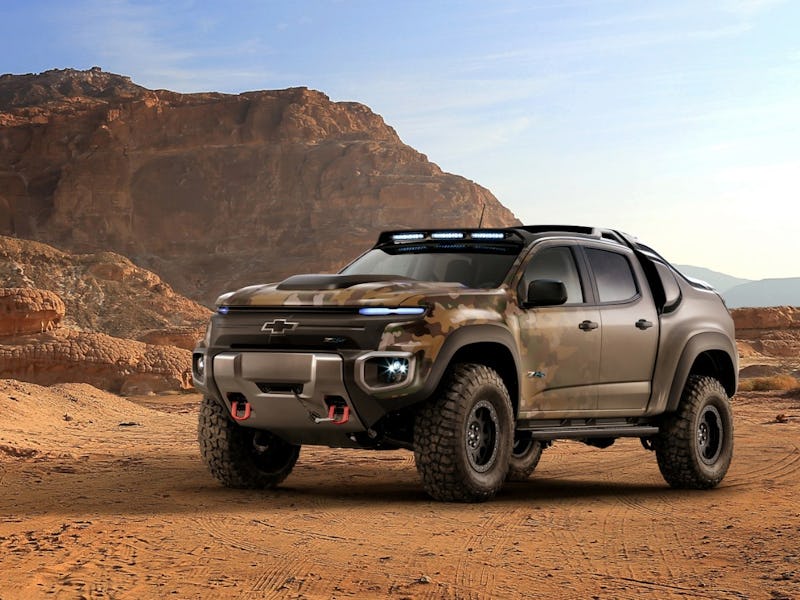The U.S. Army’s TARDEC (Tank Automotive Research, Development & Engineering Center) Division and General Motors unveiled this week the Colorado ZH2, a hydrogen-powered truck that took a year to design and build.
Founded in 1946, TARDEC, which is based in Warren, Michigan, is the home of the military’s most advanced automotive technology and engineering research. The research collective’s work covers everything from ground manned vehicle technologies to water generation and purification system to robotics.
As a part of the U.S. Army Research, Development and Engineering Command, TARDEC is the first-choice supplier of ground combat support weapons and vehicles for the Department of Defense. The research center is responsible for innovations like night-vision enhancing Electronic Warfare Antennas and mine-and-ambush-resistant vehicle armor.
The U.S. Army's TARDEC facility is located in Warren, Michigan, and is the research and development facility for advanced technology in ground systems.
Most notably, TARDEC is responsible for the military’s biggest advancements in fuel-efficient vehicles. In 2011, the center debuted a solar panel-clad Humvee that used 70 percent less fuel than a standard model.
Up until now, the Humvee was the pinnacle of military fuel-efficiency technology, but the features of the Chevy Colorado ZH2 promise to quickly make humvees military technology of the past.
An open trunk exposes the truck's fuel-cell engine.
The Colorado ZH2 joins a growing class of hydrogen-powered vehicles, which convert the energy produced by a chemical reaction that occurs when hydrogen is combined with water. Since its development, GM’s hydrogen-powered fuel cell system has accumulated over 3.1 million miles of real-world driving.
While hydrogen fuel still has yet to become a commonly available energy source, the process of making the fuel has gotten much cheaper over the past year, making it a more viable option for military use.
The hydrogen-powered fuel cell provides a secondary battlefield advantage: a means of creating water.
“If you’re operating in an austere environment where you don’t have ready access to water, you have a means of offsetting your water demands for the soldiers using the systems,” Paul Rogers, director of TARDEC told Trucks.
The battery of the truck is a removable power-takeoff unit which is capable of proving 25 kilowatts of electric power to other equipment, making the vehicle valuable in situations where other electric power isn’t available. For comparison, the 2011 fuel-efficient demonstration vehicle only provided 20 kilowatts of onboard power for equipment.
Tow hooks
As with the latest Tesla battery, hydrogen power gives the vehicle the ability to quickly torque and accelerate. It’s equipped with tow hooks that take full advantage of the vehicle’s maximum power.
The truck also has 37-inch tires and a modified suspension to support off-road stability.
The truck’s silent engine, reduced risk of being caught by thermal detectors, and camouflage design make it perfect for ground missions.
For now, it’s equipped with two-by-two seating and power steering. All in all, the interior is, well, a little less futuristic than the engine. Pretty much your standard display here:
The Army expects the unit will be ready for ground use sometime next year. Here’s a time-lapse video released by GM that shows its assembly:
